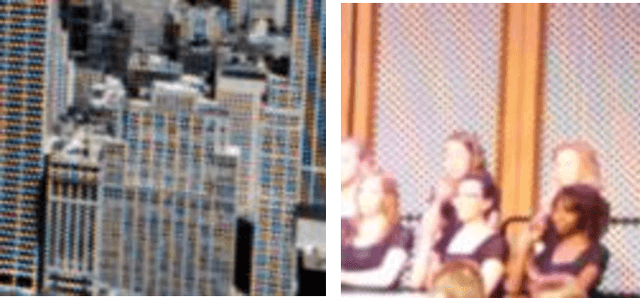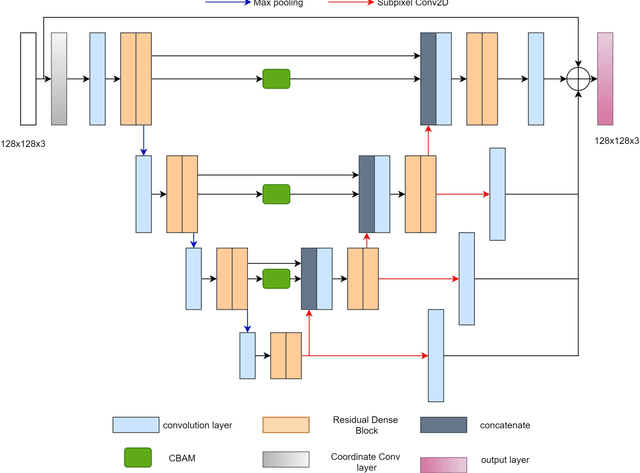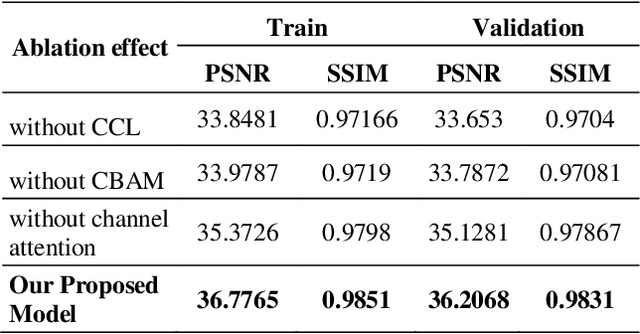D. Sabari Nathan
Light Weight Residual Dense Attention Net for Spectral Reconstruction from RGB Images
Apr 19, 2020



Abstract:Hyperspectral Imaging is the acquisition of spectral and spatial information of a particular scene. Capturing such information from a specialized hyperspectral camera remains costly. Reconstructing such information from the RGB image achieves a better solution in both classification and object recognition tasks. This work proposes a novel light weight network with very less number of parameters about 233,059 parameters based on Residual dense model with attention mechanism to obtain this solution. This network uses Coordination Convolutional Block to get the spatial information. The weights from this block are shared by two independent feature extraction mechanisms, one by dense feature extraction and the other by the multiscale hierarchical feature extraction. Finally, the features from both the feature extraction mechanisms are globally fused to produce the 31 spectral bands. The network is trained with NTIRE 2020 challenge dataset and thus achieved 0.0457 MRAE metric value with less computational complexity.
Moire Image Restoration using Multi Level Hyper Vision Net
Apr 18, 2020



Abstract:A moire pattern in the images is resulting from high frequency patterns captured by the image sensor (colour filter array) that appear after demosaicing. These Moire patterns would appear in natural images of scenes with high frequency content. The Moire pattern can also vary intensely due to a minimal change in the camera direction/positioning. Thus the Moire pattern depreciates the quality of photographs. An important issue in demoireing pattern is that the Moireing patterns have dynamic structure with varying colors and forms. These challenges makes the demoireing more difficult than many other image restoration tasks. Inspired by these challenges in demoireing, a multilevel hyper vision net is proposed to remove the Moire pattern to improve the quality of the images. As a key aspect, in this network we involved residual channel attention block that can be used to extract and adaptively fuse hierarchical features from all the layers efficiently. The proposed algorithms has been tested with the NTIRE 2020 challenge dataset and thus achieved 36.85 and 0.98 Peak to Signal Noise Ratio (PSNR) and Structural Similarity (SSIM) Index respectively.
 Add to Chrome
Add to Chrome Add to Firefox
Add to Firefox Add to Edge
Add to Edge